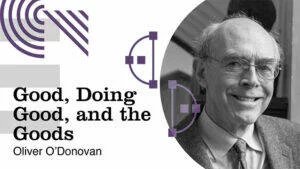John R. Schneider’s Animal Suffering and the Darwinian Problem of Evil is an important contribution to an important topic—namely, the theological challenge of animal suffering. Theodicy has traditionally been more focused on human suffering, but the emergence in the modern era of what Schneider calls “the Darwinian world” (the revolutionary new picture of nature that emerges from evolutionary science) presents a number of its own distinctive and difficult problems for theism. Thankfully this challenge is now receiving more attention, and Scheider’s work is a stimulating addition to this field.
A particular strength of Schneider’s approach is that he takes the problem of animal suffering with full seriousness, refusing to accept the all-too-easy answers sometimes given in response to it. He rightly recognizes that the difficulty is not the mere fact of animal suffering, but the particular qualities of this suffering in the Darwinian portrait—the quantity of death and pain during the time scale involved, the reality and nature of mass extinctions, the seeming inefficiency of Darwinian mechanisms, and so forth. An example of Schneider’s sensitivity to this fact would be his discussion of “micro-monsters” (pp. 38–42), which he defines as “huge hordes of microbial, viral, and other sorts of monstrous miniature creatures” (p. 4). My own thought while reading this section was this: the only significant difference between imaginary monsters (like Frankenstein or goblins) and creatures such as giant water beetles or ichneumon wasps is that the latter are smaller. (And, perhaps, if you are a frog or a caterpillar, far more terrifying.) Schneider is to be commended for drawing out problems like this, and for engaging the problem of animal suffering with attention to its aesthetic and emotional dimensions.
When it comes to his proposed answers to the problem, Schneider’s work makes a number of interesting proposals. In particular, readers will benefit from considering Schneider’s engagement with the book of Job, his emphasis on aesthetic theodicy, and his discussion of animals in heaven. His criticism of “only way theodicy” in Chapter Six is also an important contribution to this field.
Defining “Lapsarian Theodicy”
Schneider’s overall proposal also raises a number of questions. Here I want to raise a few concerns with respect to his criticism in Chapter Five of lapsarian theodicy. To begin with, by “lapsarian theodicy” Schneider seems to be thinking primarily of the view, often associated with “young-earth creationism,” that animal suffering and death is the direct result of the sin of Adam and Eve in the recent past, which Schneider describes as broadly the view of premodern Christians. Thus, he refers to “the discovery that, contrary to Genesis and historic tradition, violence and predation had been features of the nonhuman naturalAugustine claimed that animal death displays a particular kind of beauty; that it can serve to teach us valuable spiritual lessons; and that it only strikes us as bad because we cannot see the larger purposes for which God allows it. realm from its beginning. This discovery was “clearly in conflict with the biblical account” (p. 21, italics added). However, this kind of lapsarian theodicy was not actually the mainstream historic Christian view. Augustine, for example, energetically affirmed animal death and predation before the fall. He claimed that animal death displays a particular kind of beauty; that it can serve to teach us valuable spiritual lessons; and that it only strikes us as bad because we cannot see the larger purposes for which God allows it. Basil, Ambrose, Thomas Aquinas, and many others similarly affirmed animal death before the human fall.See Gavin Ortlund, Retrieving Augustine’s Doctrine of Creation (Downers Grove, IL: IVP Academic, 2020), 151–82, for an exposition of Augustine on this point, and some quotes from Basil, Ambrose, and Thomas.
There are a variety of different ways that lapsarian theodicy can be understood—some, for example, involve the angelic fall. Schneider mentions the theory that the Satanic fall caused natural evil on p. 83, but he seems to have in mind one particular variation of angelic fall theodicy (in my view, one of the less plausible). He calls it “Gregory Boyd’s proposal” and describes it as the notion that “God gave angelic beings freedom to manipulate natural laws” (p. 83). But the proposal is not really Boyd’s—elsewhere I have drawn attention to it in the writings of C. S. Lewis, J. R. R. Tolkien, Alvin Plantinga, Hans Urs von Balthasar, Thomas Torrance, and others dating back to the nineteenth century.Gavin Ortlund, “On the Fall of Angels and the Fallenness of Nature: An Evangelical Hypothesis Regarding Natural Evil,” Evangelical Quarterly 87.2 (2015): 114–36. Schneider notes that Lewis and Plantinga and E.L. Mascall were other advocates for this view, but he does not explore their articulation of it (or Boyd’s). These thinkers typically did not conceive of angelic beings willfully manipulating natural laws, nor did they necessarily regard animal death per se as an evil.
Thus, there is a spectrum of views of concerning what natural evil resulted from the fall of angels, and how it did so. For instance, some would say that animal death and suffering are not necessary evil, but that some of the conditions by which they have been aggravated are. All that is necessary to angelic fall theodicy is the modest possibility that nature has been influenced for evil in some ways as a result of the fall of angels. The theory is admittedly speculative, but it draws its plausibility from the presence of the serpent in Genesis 3, which suggests that the world into which Adam and Eve were born already contains evil (more on that below).
Defending Lapsarian Theodicy
My main purpose here is not to defend this particular species of lapsarian theodicy, but rather the idea as such, since Schneider explains that his four objections to lapsarian theodicy apply to any kind of lapsarian theodicy (pp. 84–108).But it is not at necessary to conceive of Adam and Eve like this; and such a view is not really authentic to Augustine, or the theological tradition more generally. It seems to me that these objections could have benefitted from more careful consideration of classical responses within the tradition of Christian theology. Take his third objection, for instance, the problem of “paradisiacal motivation.” This is an age-old objection that Augustine treated in his commentary on Genesis: namely, if Adam and Eve were morally perfect and enjoyed open fellowship with God, what possibly could be their motivation for rejecting this happy state and knowingly choosing evil?
In developing this objection, Schneider describes the original human condition as a kind of perfection in which human beings would have possessed an ideal moral, spiritual, physical, alethic, and aesthetic existence (p. 91). He repeatedly speaks of pre-fallen Adam as possessing the beatific vision, describing him as a “mighty man with utmost beatific endowments and advantages” (p. 93). But it is not at necessary to conceive of Adam and Eve like this; and such a view is not really authentic to Augustine, or the theological tradition more generally. Augustine held that Adam and Eve held to a conditional immortality before the fall; their time in Eden was a probationary period testing period; if they had not sinned, they would been translated to a new kind of existence; they were not created in perfect wisdom, but existed in an “intermediate position” between wisdom and folly, comparable to human infancy.Ortlund, Retrieving Augustine’s Doctrine of Creation, 209–11. Thus, Augustine did not envision the posse peccare state of Adam and Eve in Eden in the ideal beatific conditions that Schneider describes. Other theologians, like Irenaeus, have gone further, emphasizing even more strongly the childlike innocence and immaturity of unfallen Adam and Eve.See Ireneaus, Against Heresies 4.38.3, in Ante-Nicene Fathers, vol. 1, The Apostolic Fathers, Justin Martyr, Irenaeus, ed. Alexander Roberts and James Donaldson (1885; reprint, Peabody, MA: Hendrickson, 2012), 521–22.
In addition, it is not clear that the “paradisiacal motivation” objection establishes that an evil motive cannot be freely chosen from a state of goodness. In his classic Mere Christianity, C. S. Lewis addressed this issue:
When we have understood free will, we shall see how silly it is to ask, as somebody once asked me, ‘Why did God make a creature of such rotten stuff that it went wrong?’ The better stuff a creature is made of—the cleverer and stronger and freer it is—then the better it will be if it goes right, but also the worse it will be if it goes wrong. A cow cannot be very good or very bad; a dog can be both better and worse; a child better and worse still; an ordinary man, still more so; a man of genius, still more so; a superhuman spirit best—or worst—of all.C.S. Lewis, Mere Christianity, in The Complete C. S. Lewis Signature Classics (San Francisco,CA: HarperSanFrancisco, 2002), 34–35.
Schneider’s responses to Lewis and Alvin Plantinga on this point are unconvincing. He seems to think that God would be unjust to create human beings in a condition that is less than paradisiacal perfection, from which they would liable to fall; and he insists that for the human fall to function as a theodicy, “original beatific conditions are necessary” (pp. 97–98). But why should this be the case? On this point and others, engagement with Thomas Aquinas’s affirmation that good is the cause of evil in Summa Theologica, Part 1, Question 49 would have been useful.
Similarly, the first problem he recounts against lapsarian theodicy, that of “original cosmic fragility,” relies on the intuition that in order for moral evil to have such destructive consequences to nature, God must have created the world as fragile or easily breakable. However, the destructive power of evil need not depend on any weakness in creation; evil is plausibly understood as an inherently destructive, corrosive phenomenon. On such a view of evil, there is no world in which evil, should it come into existence, would not corrupt nature. The second objection, the “moral impropriety” problem, claims that it is badly misplaced for God to unleash natural evil on innocent animals in response to moral evil. However, this overlooks the systemic, interlocked nature of God’s creation. Is there impropriety in God allowing the actions of one creature to affect others in the current state of the world? We should also say that natural evil need not be considered as something God “unleashes,” as opposed to a natural and inevitable consequence of evil.
Concluding Matters
Moving on to a few other aspects of Schneider’s constructive proposal, I appreciate his focus on eschatology in the final chapters, and he makes a number of fascinating suggestions here. However, I worry about the correlation he draws between evolution and divine kenosis (self-emptying). There are concerns about the whole idea of kenosis that are too complicated to delve into here concerning how it squares with orthodox Christology.In sum, Schneider’s emphasis on aesthetic theodicy has much promise, and I believe it makes an important contribution to the effort of a full theodicy with respect to natural evil. But even if we were to remove the idea of kenosis and simply draw a comparison between evolution and the incarnation more generally, there are too many differences for the comparison to be useful. For one thing, the incarnation was a willing act of the divine Son, whereas animals suffering during the evolutionary process did not will the process they are involved in. A similar problem emerges with the comparison of animals and martyrs (pp. 264–68) that Schneider explores: since martyrs die on principle for their faith, the correlation with animals feels like a stretch.
In sum, Schneider’s emphasis on aesthetic theodicy has much promise, and I believe it makes an important contribution to the effort of a full theodicy with respect to natural evil. But without a clear account of the fall, there is a worry about trivializing evil by responding to it purely in aesthetic terms. In his treatment of Genesis 3, Schneider interprets the serpent as “an animalized symbol of Chaos—anti-cosmic power—that God has for some reason incorporated into the original, ‘very good’ cosmic design” (p. 107). But if the serpent is God’s design, rather than a fallen angel, we must find some way to avoid making God the author of evil.
Can an aesthetic theodicy, divorced from a lapsarian theodicy, really account for the terrible brutality we find in the natural world around us? Will such a theodicy be satisfying to the parent whose 3-year old has been eaten by a crocodile? Is it plausible that a greater beauty is produced by the existence of so many parasites for so many hundreds of millions of years?
I’d like to incorporate many of Schneider’s insights while retaining the conviction that the serpent in the Garden is an unwelcome intruder, such that we can sincerely say about much of the natural evil around us: it’s not the way it’s supposed to be.








Comments
Be the first one to make a comment!